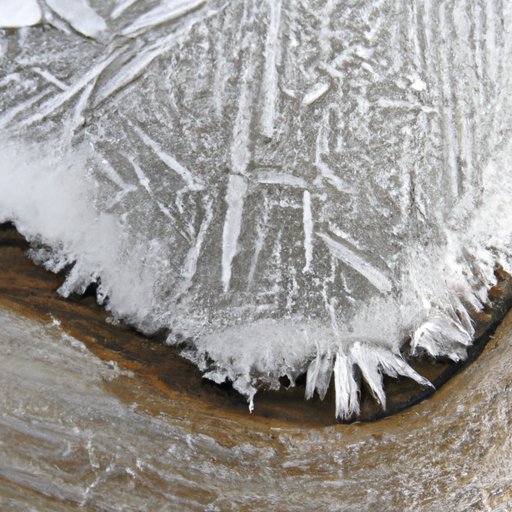
I. Introduction
As winter cold settles in, it’s important to keep an eye out for frostbite. This condition occurs when skin and tissue freeze due to exposure to cold temperatures. Frostbite is not only painful but can also lead to long-term damage or even amputation. In this article, we’ll explore how to recognize the symptoms of frostbite, ways to treat it effectively, and natural remedies to soothe the skin.
II. Frostbite: Recognizing Symptoms and Treating Effectively
Frostbite affects your body in different stages, depending on the extent to which skin and tissue freeze. Mild frostbite will start with numbness and prickling of the skin in exposed extremities. Severe cases may lead to tissue damage, skin blisters, and even gangrene. Knowing the signs of frostbite is crucial to treating it effectively.
If you notice that your skin is discoloured, feels hard, or develops blisters, it’s important to seek medical attention immediately. Keep warm and avoid rubbing the affected area as it can cause more harm.
III. 10 Steps to Treating Frostbite: A Comprehensive Guide
If you notice any of the symptoms of frostbite, follow these 10 steps immediately:
- Move to a warm, dry area immediately: It’s important to avoid additional exposure to cold weather.
- Remove wet clothing and jewellery: Wet clothing can lower your body temperature and lead to hypothermia.
- Warm frostbitten area gradually: Gradually warm the affected area in water with a temperature of 104 to 107.6 F (40-42 C) until the skin becomes soft and pink again.
- Avoid using direct heat: Refrain from using hot water, a heating pad, or an open flame to warm the area.
- Take pain relievers: Over-the-counter pain relievers like acetaminophen can help alleviate pain.
- Keep the frostbitten area elevated: This helps reduce swelling by impeding fluid collection.
- Avoid refreezing: Don’t re-expose the affected area to cold temperature.
- Treat blisters: If blisters form, avoid breaking them. Instead, keep the area clean and cover with a sterile dressing.
- Stay hydrated: Drinking plenty of fluids can help combat dehydration, which can lead to hypothermia and frostbite.
- Seek medical attention when necessary: Moderate to severe cases of frostbite require medical attention.
Remember, it’s important to seek medical care if you suspect you have frostbite, experience severe pain, or feel confused or dizzy.
IV. Quick First-Aid Tips for Treating Frostbite
When faced with frostbite, it’s important to take immediate action to prevent further damage. Here are some quick first-aid tips:
- Protect the area: Cover the affected area with a warm cloth or blanket to help prevent further heat loss.
- Avoid hot water: When warming the area, only use moderately warm water. Avoid hot water as it can cause burns.
- Avoid rubbing: Rubbing the affected area can cause more damage to the skin.
- Stay dry: Remove wet clothing immediately to avoid hypothermia.
- Stay hydrated: Drink plenty of fluids to prevent dehydration.
V. Natural Remedies for Soothing Frostbitten Skin
Natural remedies can provide helpful relief and speed healing for frostbite. Here are some remedies to try:
- Aloe vera: Aloe vera can help rejuvenate the damaged skin and promote healing.
- Lavender oil: Lavender oil is known for its soothing effects and can be used to help the skin repair itself.
- Turmeric: Turmeric has anti-inflammatory and antioxidant properties that can reduce swelling and promote the growth of new cells.
- Ginger: Ginger helps increase blood circulation and can help alleviate pain.
- Coconut oil: Coconut oil is rich in vitamins E and K, both of which can help repair damaged skin.
VI. The Dos and Don’ts of Frostbite Treatment
When treating frostbite, it’s important to avoid some common mistakes that can cause further harm. Here are some dos and don’ts:
- Do: Keep the affected area elevated
- Don’t: Apply direct heat
- Do: Keep the skin clean and dry
- Don’t: Break blisters that form on the skin
- Do: Seek medical attention for moderate to severe cases
- Don’t: Ignore the symptoms of frostbite.
VII. Conclusion
Frostbite can be a serious condition, but with prompt treatment, it is possible to prevent further damage. Be sure to follow the steps outlined in this article to treat frostbite quickly and effectively, and take precautions to prevent it in the future. Remember to seek medical attention when necessary and stay hydrated in cold weather. By being aware, informed, and proactive, you can enjoy winter without fear of frostbite.




